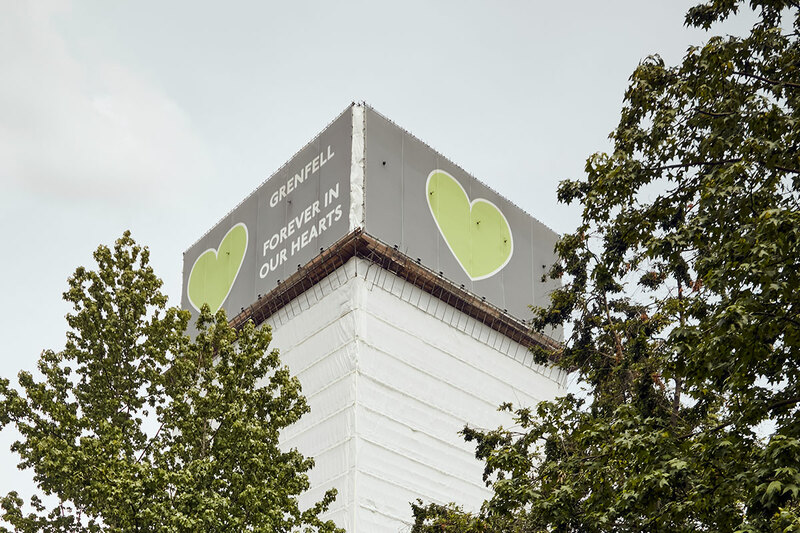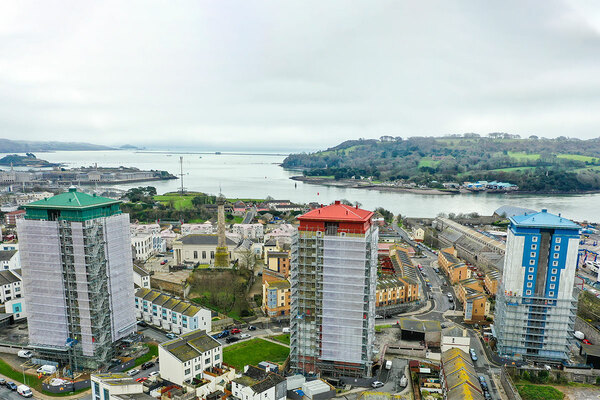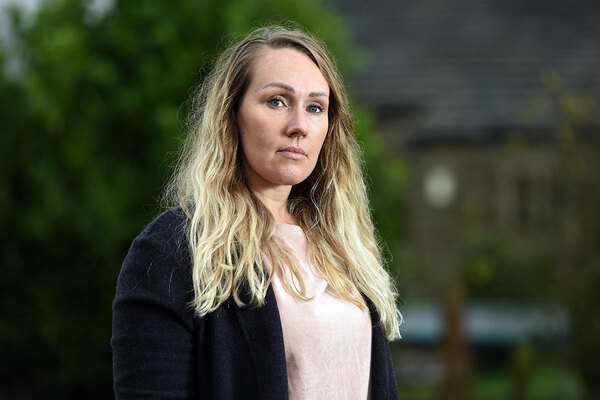 Jules Birch
Jules BirchThe Grenfell report is a good start but the clock is still ticking on real change
There is much to be admired in Sir Martin Moore-Bick’s phase one report on Grenfell. But with an election looming – and a new set of ministers likely to come in thereafter – we could still face a long wait before our buildings are safe, writes Jules Birch
For all the admirable clarity in Sir Martin’s phase one report from the Grenfell Tower Inquiry, almost 28 months on from the fire, the official response is still running to catch up.
This week’s leaks and row about the role of the London Fire Brigade (LFB) only serve as reminders of how much remains to be done.
The other major news event of the week ensured that the building safety legislation to implement proposals in the Hackitt Review – promised in the Queen’s Speech – will have to wait until after the election.
The same goes for the Social Housing White Paper. It has now at least been promised by the prime minister and housing secretary but the clock is still ticking on regulation, fighting stigma and all the other fine words in the green paper, published nearly 15 months ago.
That too will have to wait until after 12 December, probably with yet more new ministers who will need to get up to speed with the issues.
Sir Martin’s phase one report found that the cladding was the “primary cause of fire spread”, the judge ruling that it breached the building regulations.
He had not intended to rule on this point in the first part of the inquiry, which was focused on what happened on the night of 14 June 2017. But he says there is “compelling evidence” that the external walls did not meet the requirement in the regulations to “adequately resist the spread of fire”, adding that “on the contrary they promoted it”.
This may seem self-evident to anyone who has followed events since the fire, but the fact that he has made the judgement clears the way for phase two and moves the inquiry closer to deciding on who was responsible for the actions and inactions that led to it.
The basis of much of Sir Martin’s criticism of the LFB is based on its “failure to educate firefighters in the dangers associated with combustible cladding systems” and “the absence of any training for incident commanders in how to recognise the need for evacuation”.
He finds this “surprising” given a history of fires involving cladding on high-rise buildings dating back to the Knowsley Heights fire in 1991 and the blaze at Garnock Court in 1999, as well as a specific warning to London boroughs about external fire spread from the head of the LFB fire safety regulation department following the Shepherd’s Court fire in May 2017.
However, exactly the same point about awareness of cladding fires can, and almost certainly will, be made about the companies and consultants involved in the design and construction of the refurbishment of the tower and about those in central government responsible for the building regulations.
It also raises the question not asked in phase one of how, if the Grenfell cladding was so clearly in breach of the regulations, similarly hazardous material ended up on hundreds of other buildings around the country.
Just as the report named individual firefighters, Emma Dent Coad, Labour MP for Kensington, pointed the finger at those she said were “at the top of the pyramid of responsibility” in the Commons debate on Wednesday. They included the chief executives of three of the companies involved in the refurbishment, two Kensington and Chelsea councillors, three former ministers, not to mention the prime minister and chair of the Conservative Party.
Ms Emma Dent Coad warned that: “These failures of corporate interests, the complacency of politicians over many years and the failures of this report mean, to my mind, that Grenfell Two could happen tomorrow.”
Phase two is due to start in January but, away from Grenfell itself, progress is still painfully slow on those wider issues of building safety.
True, the government has banned combustible cladding on new residential high rises and is consulting on reducing the height threshold for sprinklers.
Yet, despite the £600m of funding eventually provided by ministers, even the most urgent post-Grenfell task of removing similar aluminium composite material (ACM) cladding from existing buildings around the country remains incomplete.
There are perhaps 60,000 people living in buildings with ACM cladding and there are still 201 buildings, including 144 private residential blocks, where work has not even started to remove it.
As Rushanara Ali, Labour MP for Bethnal Green and Bow, put it in Wednesday’s Commons debate: “Only three buildings in my constituency have had the work done. There are 39 private blocks in which people cannot sleep at night.”
One big reason why remediation progress has been so slow is that the cladding scandal is wrapped up with the wider leasehold scandal as freeholders refuse government exhortations to ‘do the right thing’.
Pressed on this in the Commons debate, housing secretary Robert Jenrick said: “We will name those building owners that are not remediating ACM cladding at the pace that is required and take enforcement action against them.”
But that is just ACM. Around the country, tens of thousands of people are living in other buildings with other types of combustible cladding.
“Phase two is due to start in January but, away from Grenfell itself, progress is still painfully slow on wider issues of building safety”
The UK Cladding Action Group says the government has taken some steps to make them safe but they are “too little, too late”. It adds: “The government refuses to engage with us and seem set on repeating the mistakes of the past. Fire does not distinguish between different types of dangerous cladding.”
In total, the owners of up to 500,000 high-rise flats are caught up in the wider situation, unable to sell or remortgage because of uncertainty caused by government advice.
And that is just the high-rise residential buildings. As Steve Reed, Labour MP for Croydon North, pointed out on Wednesday: “The government have now announced, belatedly, a partial ban on flammable cladding on some new buildings, but they are still allowing it to go up on schools, hospitals and residential blocks less than six storeys high, and on hotels.
“I cannot imagine a single parent who would be happy to know that their child’s school was covered in flammable cladding, but the government do not seem to think that it is a problem.”
And that is just the cladding. Large London housing associations estimate that the total costs of making their high-rise blocks safe could be almost £7bn and that even meeting a fraction of that cost themselves after potential insurance and warranty payments would reduce their ability to build new homes.
Birmingham City Council says it faces a £93m bill for its tower blocks, including £31m for sprinklers, £34m for fire doors and frames, and £28m for window infill panels. With no financial support from central government, it is cutting its repairs budget.
The phase one report refers to the Lakanal House fire coroner’s recommendation in 2013 that landlords of high-rise residential buildings should consider the retrofitting of sprinklers but says he cannot suggest any recommendation at this stage because he has not yet heard any evidence about their effectiveness.
But it also calls for information boxes on site, something that former communities secretary Eric Pickles rejected as “unnecessary and disproportionate” when the Lakanal House coroner recommended exactly the same thing.
Ten years after Lakanal House, six years after those recommendations, and two years after Grenfell, the clock is still ticking.
Jules Birch, award-winning blogger











